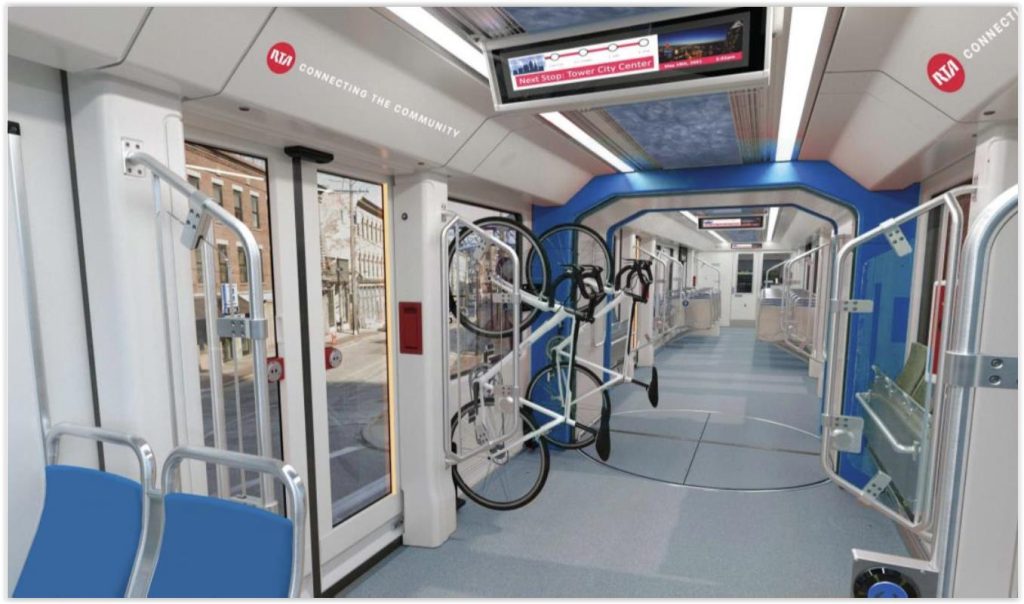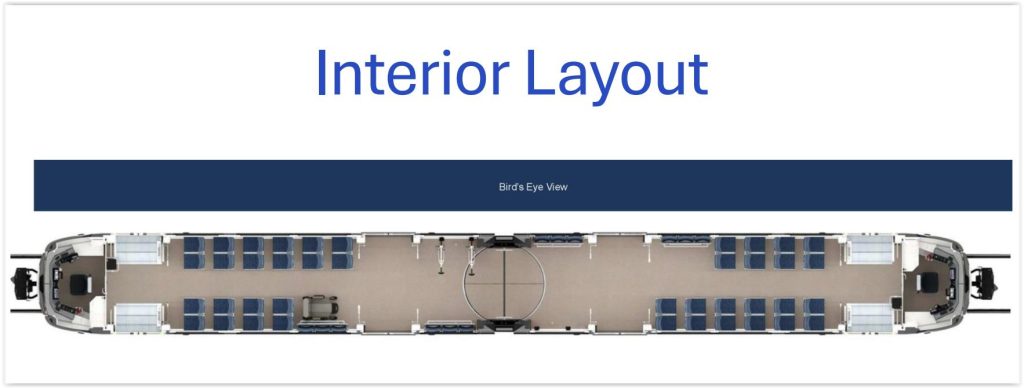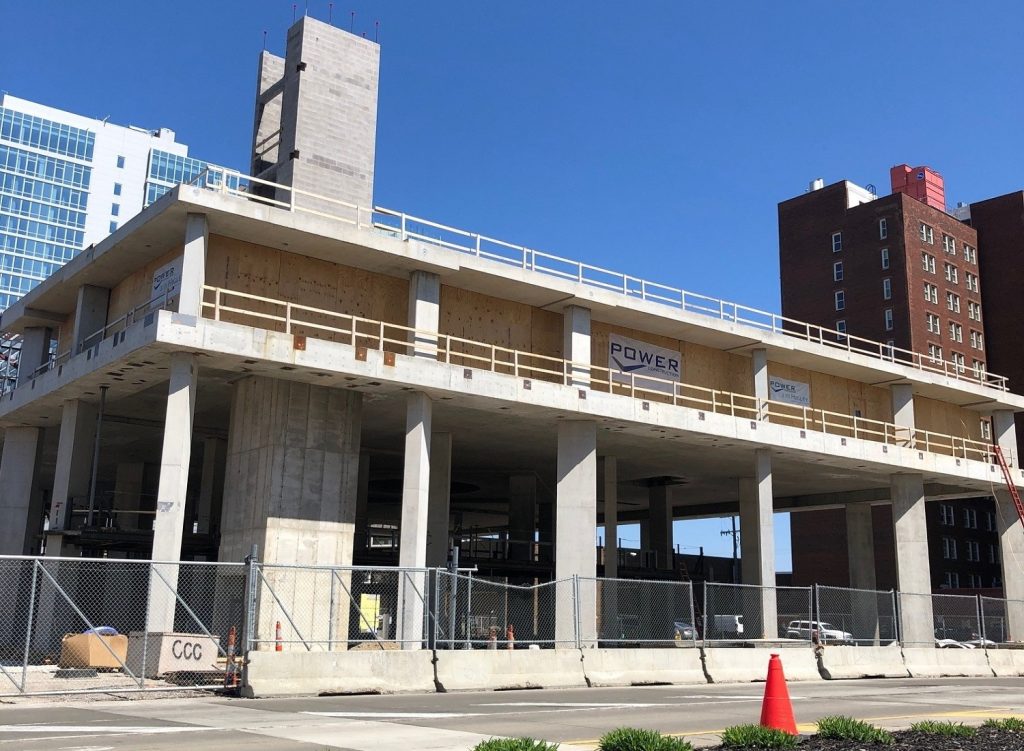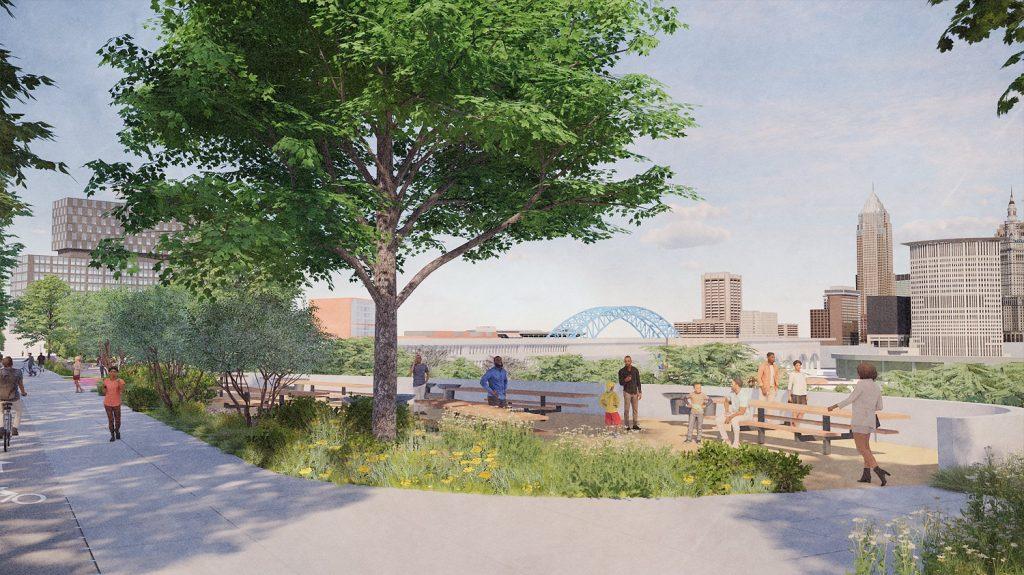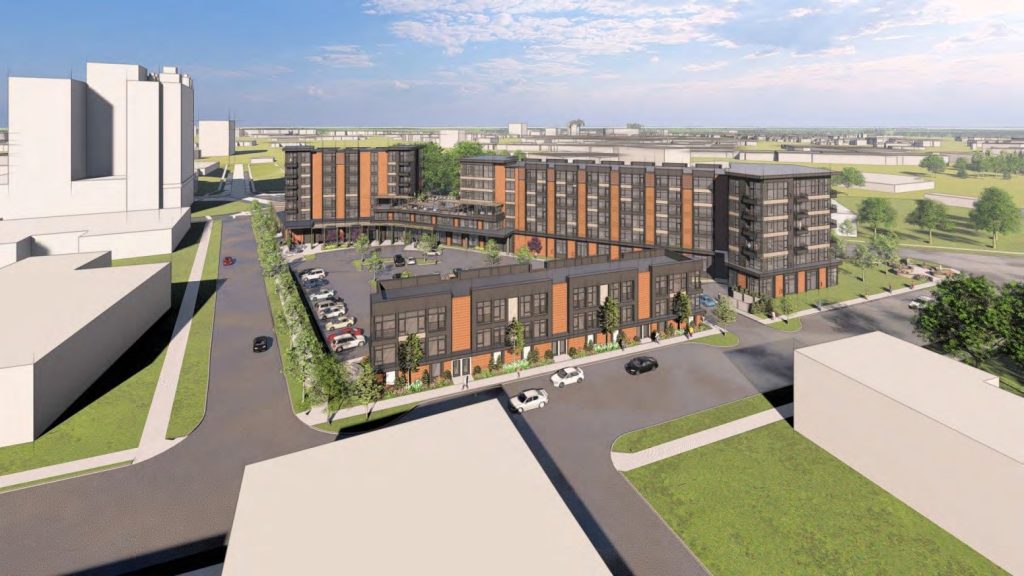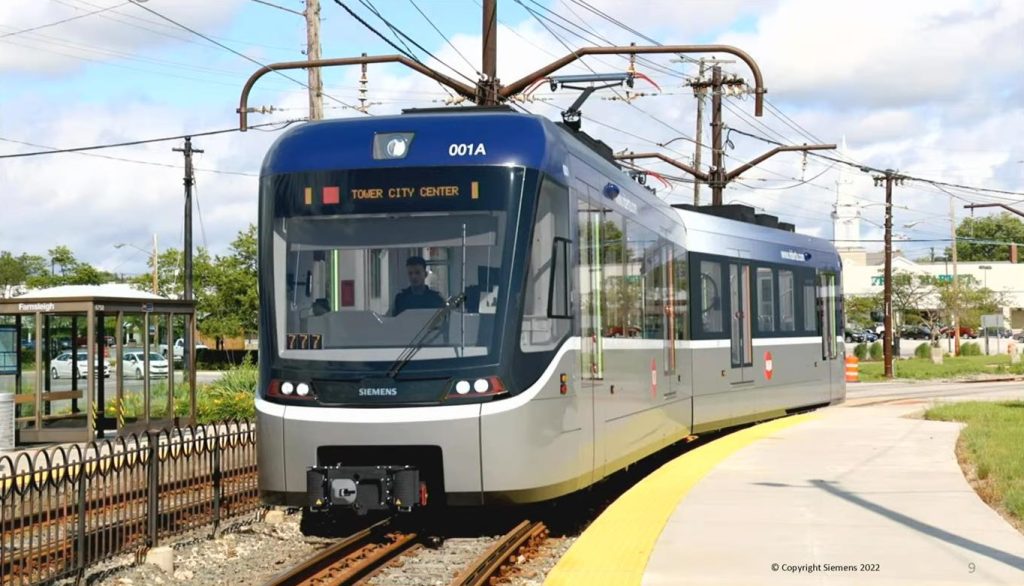
Manufacturing of the Greater Cleveland Regional Transit Authority’s new railcars has officially started. But production, testing and employee training for them will take be a couple of years before the public can start riding the new trains, beginning with service on the Red Line but soon to follow on the Blue and Green lines (Siemens). CLICK IMAGES TO ENLARGE THEM.
Blue-Green line cars to join Red Line order
Manufacturing work has begun this month on the Greater Cleveland Regional Transit Authority’s (GCRTA) new railcars, said members of the authority’s management team overseeing the replacement of its aging railcar fleet. But until enough railcars are delivered, which won’t happen until 2027, the public will still be riding the oldest trains among any transit authority in the nation.
That’s despite the expectation that the first new railcars in the initial batch of 30 are due to be delivered in June 2026, about 42 months after GCRTA awarded a contract to railcar manufacturer Siemens Mobility Inc. in 2023. Up to 60 railcars can be ordered over multiple options under GCRTA’s contract. Final assembly of the first 30 railcars will be completed in “roughly April 2027,” said Brian Moore, GCRTA’s lead manager of its railcar replacement project.
GCRTA cannot introduce the new railcars into service as they are received for multiple reasons, not the least of which because they do not fit the transit authority’s existing stations and maintenance facilities. The changeover to the new cars will have to be done once GCRTA has taken delivery of enough railcars to operate each of its three lines in their entirety. And each line will have to be shut down one line at a time so all of the stations can be retrofitted for the new cars.
“The schedule is for the 24th car to be accepted and commissioned for rail service in August 2027,” said GCRTA Public Information Officer Robert Fleig. “At that time, GCRTA will take the existing Red Line cars out of service and begin Red Line service with the 24 new rail cars.”
GCRTA has relied on two different types of rail modes, railcars and infrastructure since it acquired the two rail systems belonging to its predecessors nearly 50 years ago. It has 40 heavy-rail cars for the Red Line and 34 light-rail cars for the Blue and Green lines. Acquiring these new cars will allow GCRTA to unite the two disparate rail systems, to create operating and maintenance efficiencies, plus new routing opportunities.
Siemens has only one plant in the USA yet is the dominant domestic railcar supplier. GCRTA’s trains have to wait their turn on the assembly line. Another factor affecting the new railcars’ service start date is due to testing, commissioning and employee training. The delivery time could have been longer. Until recently, GCRTA managers anticipated that manufacturing of the new railcars wouldn’t start until early next year, Moore said.
“When I said we were supposed to begin manufacturing this month, we were actually supposed to do it at the beginning of next year,” he told GCRTA board members at an Oct. 15 GCRTA committee meeting.
“It’s way too early in the manufacturing process to anticipate an early delivery of vehicles,” Fleig added.
Also reported by the GCRTA management team last week, a formal request will be submitted to the full board of trustees next month to increase GCRTA’s 2024 capital budget by $101.5 million to exercise the next option in the contract with Siemens.
In May 2023, GCRTA’s board approved an capital improvement budget of $146.3 million for 2024. Staff is requesting to adjust the budget to $247.8 million. That funding is coming from $130 million awarded to GCRTA last year by the Federal Transit Administration — the largest federal grant ever awarded to the transit authority.
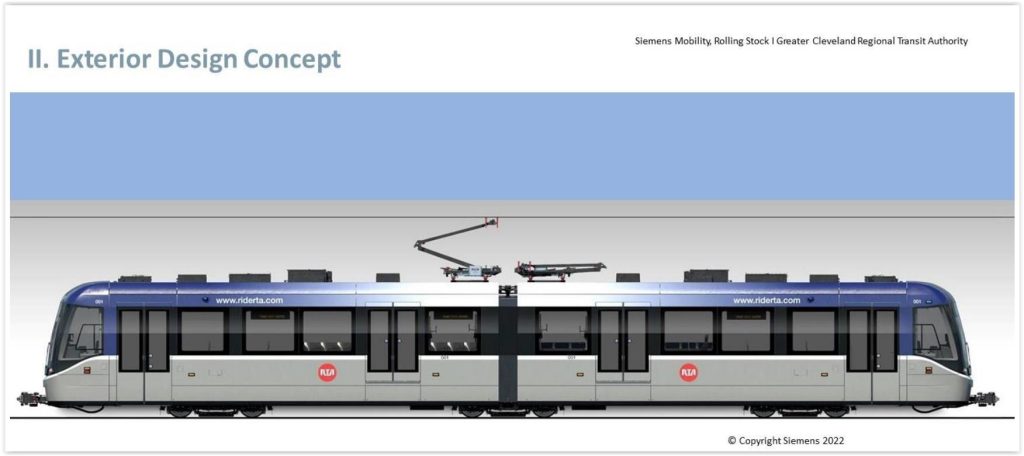
A side view of Greater Cleveland’s new Rapids. At stations with low-level platforms, like those on the Blue and Green lines, only the doors with stairs at each end of the train will open. At stations with high-level platforms, like those on the Red Line, all doors can open. The reason is the stair-doors are equipped with a trap-door that will cover the stairs so passengers can have level boarding and alighting (Siemens).
That will allow GCRTA to add another 18 railcars to its existing 30-car order so it can operate the Blue and Green lines between the downtown waterfront, Tower City and Shaker Heights. The first 30 cars were ordered to replace trains on the Airport – Tower City – Windermere Red Line which are deteriorating faster than the trains on the Blue and Green lines despite being several years newer.
“Newer” is of course a relative term. The Japanese-built Tokyu cars on the Red Line were delivered to GCRTA in 1984-85. The Italian-built Breda cars on the Blue and Green lines were delivered between 1979-81. All of those trains were due for replacement 10-15 years ago but GCRTA management did not set aside funds for their replacement until recently and federal funding for transit was more limited then, according to the rail and transit advocacy group All Aboard Ohio.
“Cost of the next 18 (railcars) is about $5.3 million (each),” Moore said. “We won’t know the final cost until they go into final assembly and have finished the (cost) escalation, which is about two years from now.”
The first 30 railcars cost about $5.1 million each. GCRTA included an estimate of the cost escalation (aka inflation) into the $5.3 million per-car price tag, which works out to about $95.4 million for all 18. That’s the minimum needed for a limited schedule on the Blue and Green lines. Additional budget authority is being added — just in case.
“Eighteen was the one that collectively, looking at all finances, 18 was where we felt comfortable,” Moore said. “Eighteen is also a number that we need in order to put the Blue and Green lines into service.”
“We are requesting to adjust the budget to $247.8 million,” said Carolyn Young, manager of GCRTA’s office of management and budget. “This will actually right-size the railcar program to allow budget authority for the next 18 car options – and some associated contingencies. We do have the funding to support the next 18.”
Total budget for the railcar replacement program is estimated at $393 million with more than $355 million available. GCRTA continues to secure the remaining funds to acquire all 60 cars, which also includes dollars for retrofitting the dual-mode, heavy/light-rail system as a standardized 33-mile light-rail network so that any train can serve any station and meet ADA accessibility standards, said Michael Schipper, GCRTA’s deputy general manager of engineering and project management.
“Every Red Line (station) platform is going to have to be widened approximately 8 inches on each side because the new rail cars are skinnier than the old ones,” Schipper said. “That’s in design now. The goal is to do the design, bid it, have all the materials ready and in place and in Cleveland and staged so we can do a very quick transition.”
He said the goal is to use materials that would be modular and easy to handle. The reason is that GCRTA won’t have to shut down the Red Line for a long period of time to transition from heavy-rail trains to the new light-rail cars.
The modifications on the Blue and Green lines are relegated to modifying the mini-high platforms for passengers who can’t climb stairs into the trains. Those mini-highs exist at about half of the light-rail stations. That part of the project is not yet funded as is the addition of mini-highs to the remaining stations. This is separate from the recent funding GCRTA won to rebuild the Blue Line stations in Shaker Heights.
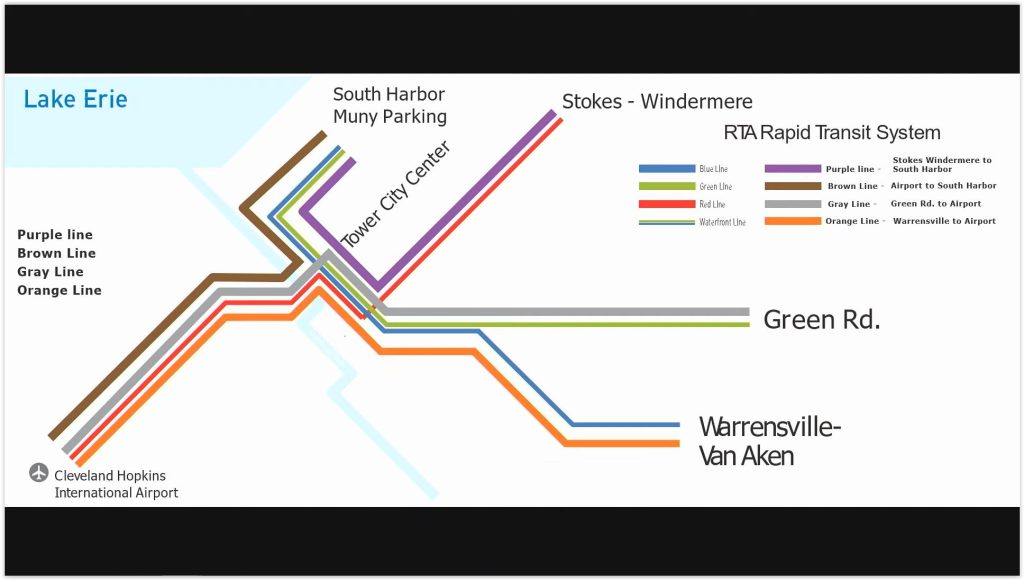
An example of the many different route and service options that are offered by the Greater Cleveland Regional Transit Authority’s new trains which, when the rail system infrastructure is standardized to accommodate them, will be able to serve any of the 52 stations on any of the three core lines (GCRTA).
“Again we have to make the edge of that widened toward the train and adjust the heights of some of them 1 to 2 inches,” Schipper said.
Although GCRTA has been around for 49 years, it has operated the former city-owned Cleveland Transit System and Shaker Heights Rapid Transit as separate rail systems with some exceptions. From the outset in 1955, they shared the same tracks and stations between Tower City and East 55th Street. Starting in 1984, they began sharing a new Central Rail Maintenance Facility at East 55th.
In 1990, the two rail modes started using the same station tracks at Tower City albeit at different ends of the platform. When the entire rail system is standardized, GCRTA could offer new Rapid rail routes and services without having to build new tracks.
For example, the Green Line from Shaker Heights may be routed through downtown to Cleveland Hopkins International Airport so a change of trains is no longer required. Perhaps even a few early-morning express trains could be offered. And if GCRTA ever adds new tracks and rail extensions, these new trains could serve them from any of the existing routes.
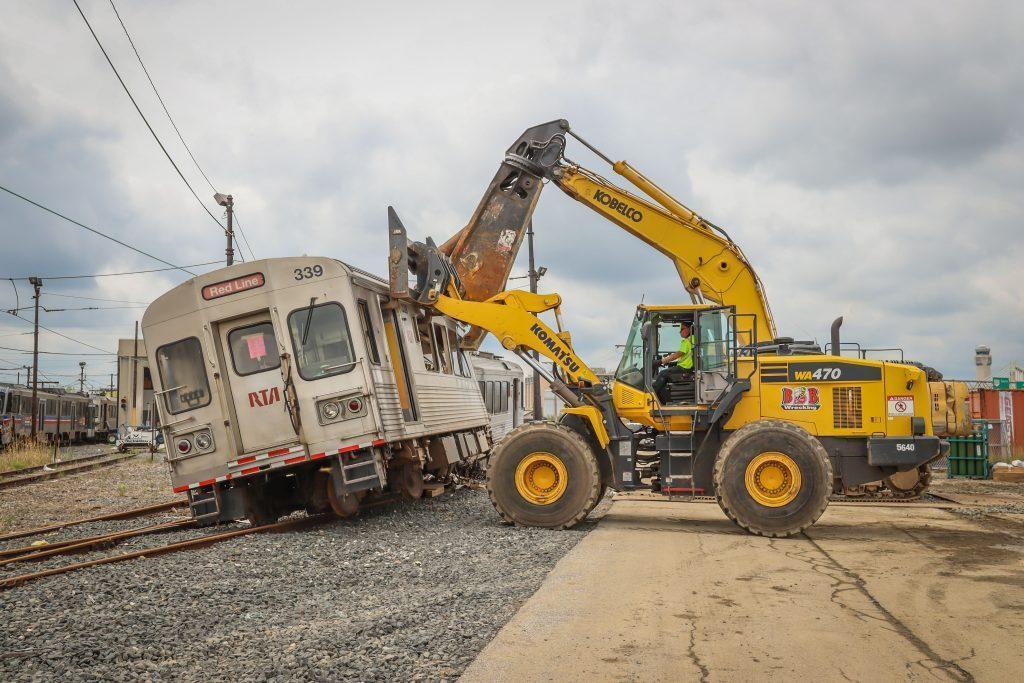
Of more than 100 railcars in the Greater Cleveland Regional Transit Authority’s original rapid transit fleet, GCRTA has about 70 left. The others were either damaged in accidents or deteriorated too much to be repaired. Since no one makes components for these trains anymore, some railcars were cannibalized for parts to keep the rest of the trains running (GCRTA).
It is hoped those kinds of new services will restore rail ridership lost since COVID as a result of fewer office workers coming downtown. But GCRTA has not done any studies yet of those potential services or what new ridership they might generate, said GCRTA Chief Operating Officer Floun’say Caver.
“We believe that the new cars along with the new potential for routes may be able to drive ridership,” he said. “We don’t have specific numbers as we’re looking at just a shift in ridership in general but we are looking at this investment as helping to be catalytic towards the service. We will have cars that are more reliable so customers won’t through situations where the train is broken down or things of that nature. So ridership is a key component of our thoughts.”
GCRTA has other infrastructure modifications to make to accommodate the new railcars. One includes new tracks and a transfer table inside the Central Rail Maintenance Facility. Another is a new switch between GCRTA’s Waterfront Line and freight railroad tracks at the Port of Cleveland to facilitate delivery of the new railcars by rail. And the West Side Rail Facilities Maintenance Department next to the Red Line by Hopkins Airport will be where the new railcars are commissioned.
That means moving the already crowded West Side Rail Facilities Maintenance Department to the former Avalon Precision Castings plant, 15583 Brookpark Rd., Brook Park. GCRTA acquired that property last year for $1.5 million and will pay SONA Construction LLC of Cleveland $1.28 million to renovate the structure for use by vehicles, storage and offices for maintenance personnel and for the transit police. Work is to be completed by August 2025.
END


